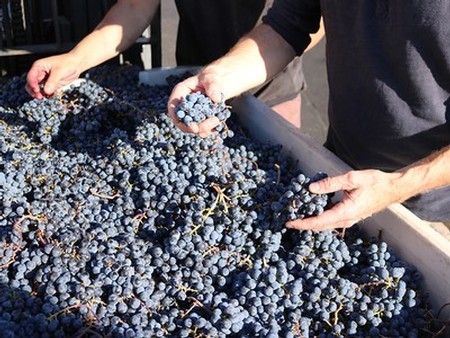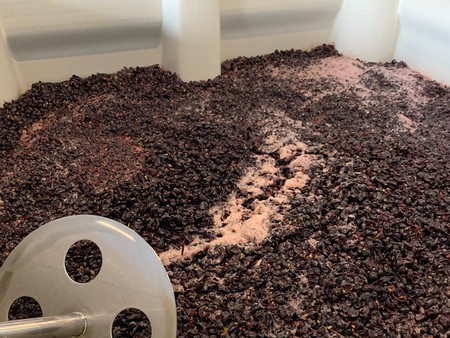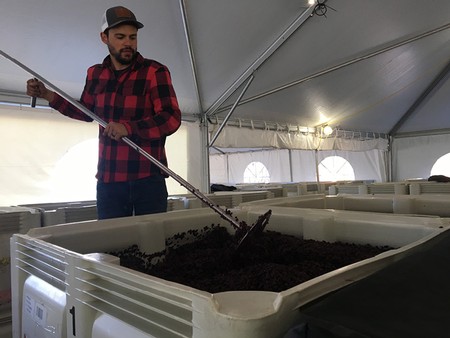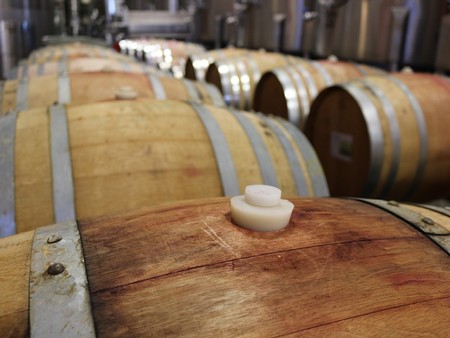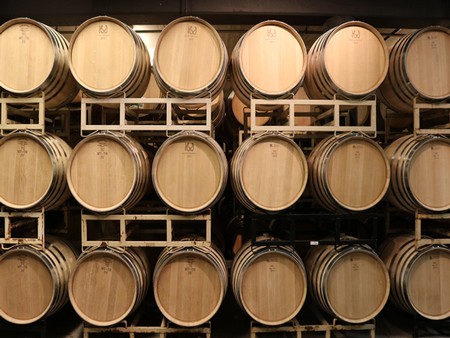After Harvest - From Vine to Barrel
Once September rolls around and harvest begins, the jam-packed weeks of picking, sorting, crushing and fermenting fly by. With so much happening in such a short amount of time, it can be hard to follow all the steps in the winemaking process that occur after the fruit is harvested. Each step on the journey from vine to barrel (detailed below) is crucial to making our award-winning classic Oregon wines.
Processing Grapes
Grapes are transported to the production pad at the Estate from our different blocks on property and single-vineyard sites and are then sorted for quality. Wine grapes used to make our Pinot Noirs (excluding our Whole Cluster Pinot Noir) and other red wines are put through the crusher destemmer, then the juice (called must at this point) is placed with the skins into small bin fermentation containers. Wine grapes for our white wines are immediately sent to the press, with the skins separated from the juice right after pressing.
Sorting grapes as they arrive at the production pad.
Fermentation tanks in wine cellar.
Fermentation Tanks
After pressing, the juice for white wine and rosé is left to cold settle for a day, then racked off it’s solids into stainless steel tanks or barrels for fermentation. Reds will be placed in small fermentation bins or tanks, with the grapes separated from the stems or as whole cluster for our Whole Cluster Pinot Noir.
Yeast
Once in tanks, yeast is added. Yeast consumes the sugar from the grapes and produces ethanol, carbon dioxide and other compounds, such as the esters (a chemical compound derived from acid) that create each wine's unique bouquet. We use a few of different yeast strains, trying to work with yeast that are neutral in order to let the fruit express its uniqueness if it's growing site.
Adding yeast to grapes in fermentation bin.
Tracking fermentation progress in wine lab.
Fermentation Begins
Once the yeast is added, fermentation can begin. Red wines ferment at warmer temperatures than white wine, usually between 80-90 degrees, while white wine ferments at about 50 degrees. Red wines are purposefully kept warm to maximize the amount of color and phenolic compounds extracted from the skins, while whites and rosé are kept cold to preserve their fruit-forward notes. While the red wine ferments, carbon dioxide is released and remaining grape seeds and skins rise to the surface.
Punchdowns
Once fermentation is underway, punch downs for red wines can begin. Our cellar workers use long metal poles with round disks at the bottom to submerging the grape seeds and skins back into the juice to extract color and aroma. Punchdowns are done twice a day and last anywhere from 12-15 days.
Punching down grape skins and seeds to extract color and aroma.
Barrels ready for wine to be transferred from fermentation bins and tanks.
Wine is Moved into Barrel
White wines are left on their lees, which consists of no longer actively fermenting yeast, to keep the wines fresh and develop complex flavors and aromas. Reds are moved from their small fermentation bins to the press to separate grape skins from the wine before being moving into barrel.
Barrels add flavors and aromas such as vanilla, hazelnut or toast. The oak from newer barrels can also heavily impact tannins and allow for slow ingress of oxygen, making the wine smoother and adding complexity. Some barrels are inoculated (the addition of active malolactic acid bacteria cultures) to allow for Malolactic Fermentation, converting the naturally occurring Malic Acid (think green apple) into Lactic Acid (think cream), softening a wine and adding additional levels of complexity. We do Malolactic Fermentation for almost all of our red wines, as well as most of our Chardonnay.
Aging
Wines are left to age, being continually monitored, stirred and tasted to track their progress. As they age, some wine evaporates and/or soaks into the wood of the barrel, so barrels are topped off throughout the process. As maturation concludes, winemakers taste test each barrel, working on creating blends that perfectly balance the varietal character, oak, and best express the varietal terroir of the vineyard site.
Wine barrels.
Sparkling wine bottles.
Filtering and Bottling
Wine is then racked and/or filtered before being sent to the bottling line. After bottling, wines are left in the cellar to mature in bottle until they are ready for release.
